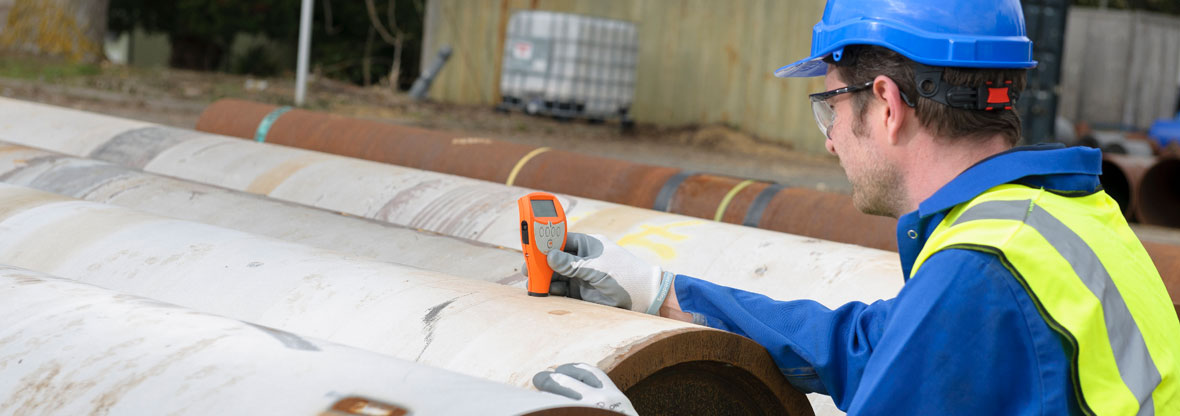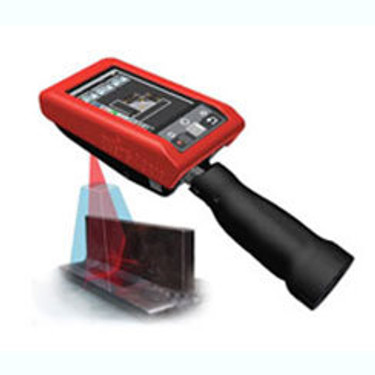Comprehensive Guide to Pipeline Welding Assessment: Guaranteeing Honesty and Safety And Security in Pipe Construction and Maintenance
The integrity and safety of pipelines are paramount in today's framework landscape, underscoring the important duty of welding assessment in pipe building and upkeep. Pipeline Welding Inspection. The intricacies included in welding assessment raising significant concerns about industry standards and the advancing technologies that may redefine these methods.

Significance of Welding Examination
Welding examination plays an essential role in making sure the stability and safety and security of pipeline systems. It offers as a basic procedure that validates the top quality and dependability of welded joints, which are often the most weak spots in pipe construction. Through methodical evaluation, inspectors can identify possible issues such as fractures, porosity, and incomplete fusion, which might endanger the structural integrity of the pipe.
The value of welding examination prolongs beyond simple compliance with industry criteria; it likewise safeguards public health and the environment. Pipelines lugging hazardous materials pose significant dangers if failures take place. Efficient assessment methods aid prevent leakages and tears, alleviating environmental damages and securing neighborhoods. Additionally, detailed inspections can improve the long life of pipeline systems, reducing the requirement for costly repairs and downtime.
In addition to ensuring safety and security and compliance, welding evaluation promotes a society of top quality assurance within companies. By prioritizing assessment throughout the welding procedure, firms can build a reputation for reliability and excellence, ultimately bring about raised consumer confidence and business chances (Pipeline Welding Inspection). Therefore, the relevance of welding evaluation can not be overstated in the context of pipeline building and construction and upkeep
Key Welding Processes
Various welding processes are used in pipe building and construction, each with its very own benefits and applications. Amongst one of the most commonly used techniques are Shielded Steel Arc Welding (SMAW), Gas Tungsten Arc Welding (GTAW), and Gas Metal Arc Welding (GMAW) SMAW is preferred for its adaptability and capability to execute well in different environmental problems, making it appropriate for field applications.
GTAW, frequently referred to as Tungsten Inert Gas (TIG) welding, is recognized for its ability to generate high-grade welds with exceptional control over warmth input, making it suitable for thin-walled pipes and stainless-steel products. GMAW, or Metal Inert Gas (MIG) welding, supplies high deposition rates and is effective for massive tasks, commonly utilized in the manufacture of pipelines in controlled atmospheres.
In Addition, Immersed Arc Welding (SAW) is used for its deep penetration and high performance, particularly in the building of large-diameter pipelines. Each of these procedures adds to the general stability and safety of pipe building and constructions, enabling welders to pick one of the most appropriate approach based on material kind, task requirements, and environmental problems. Comprehending these vital welding processes is crucial for reliable pipeline welding inspection.
Common Flaws and Their Impact

Porosity, identified by small gas pockets trapped within the weld, damages the material and can result in leaks. Fractures, which might occur due to thermal stress and anxieties or incorrect air conditioning, can result and circulate in structural failing under stress. Undercutting, where the base additional reading metal is eroded along the weld bead, decreases the reliable cross-section of the pipeline, enhancing the danger of crack.
Insufficient fusion happens when the weld steel does not properly bond with the base steel, leading to weak areas that may stop working under stress and anxiety. Slag inclusion, the entrapment of non-metallic material within the weld, can also damage the joint's stability. Recognizing and addressing these problems early in the building procedure is critical to making sure the long-lasting integrity and safety of pipeline systems, consequently guarding both the framework and the setting.
Evaluation Tools and techniques

Aesthetic inspection is the first line of protection, enabling assessors to identify surface area irregularities, imbalance, or various other noticeable flaws. Ultrasonic screening uses high-frequency audio waves to discover interior defects, giving precise deepness dimensions and defining defects without harming the weld. Radiographic testing uses X-rays or gamma rays to generate photos of the weld, making straight from the source it possible for the recognition of inner voids, fractures, or inclusions.
Magnetic bit screening is specifically reliable for identifying surface area and near-surface gaps in ferromagnetic products. This method entails applying a magnetic area and fine iron fragments to the weld, disclosing flaws through the accumulation of fragments at flaw sites.
Along with these techniques, specialized devices such as automated ultrasonic screening tools and digital radiography systems boost examination precision and efficiency, making certain a complete examination of pipe welds during construction and upkeep.
Finest Practices for Compliance
Sticking to best methods for compliance in pipeline welding examination is essential for guaranteeing the honesty and safety of the facilities. Organizations should establish a comprehensive quality administration system that lines up with market criteria such as ASME, API, and AWS. This consists of creating thorough welding treatments that define the qualifications, strategies, and products required for welders.
Normal training and certification of assessment workers are important to preserve high expertise degrees. Assessors must know with different non-destructive screening (NDT) methods, consisting of ultrasonic testing, radiographic testing, and visual assessment, to effectively recognize possible defects.
Paperwork plays a vital role in compliance; maintaining exact records of evaluations, weld procedures, and workers qualifications aids to make sure traceability and accountability. Arranged audits and reviews of welding techniques should be carried out to recognize locations for improvement and make certain adherence to established methods.

Conclusion
In verdict, the execution of strenuous welding inspection protocols is vital for making certain the integrity and safety and security of pipeline building and maintenance. Constant improvement in assessment processes will certainly add to the durability and integrity of pipe systems, highlighting the essential duty of welding inspection in the market.
The honesty and safety and security check this of pipes are vital in today's facilities landscape, emphasizing the essential role of welding examination in pipeline construction and upkeep. Understanding these essential welding procedures is crucial for reliable pipeline welding assessment.
Adhering to finest methods for compliance in pipeline welding inspection is essential for ensuring the stability and security of the infrastructure.In final thought, the implementation of rigorous welding inspection protocols is vital for ensuring the stability and safety and security of pipeline construction and upkeep. Continuous renovation in inspection processes will contribute to the longevity and dependability of pipe systems, highlighting the important role of welding evaluation in the market.